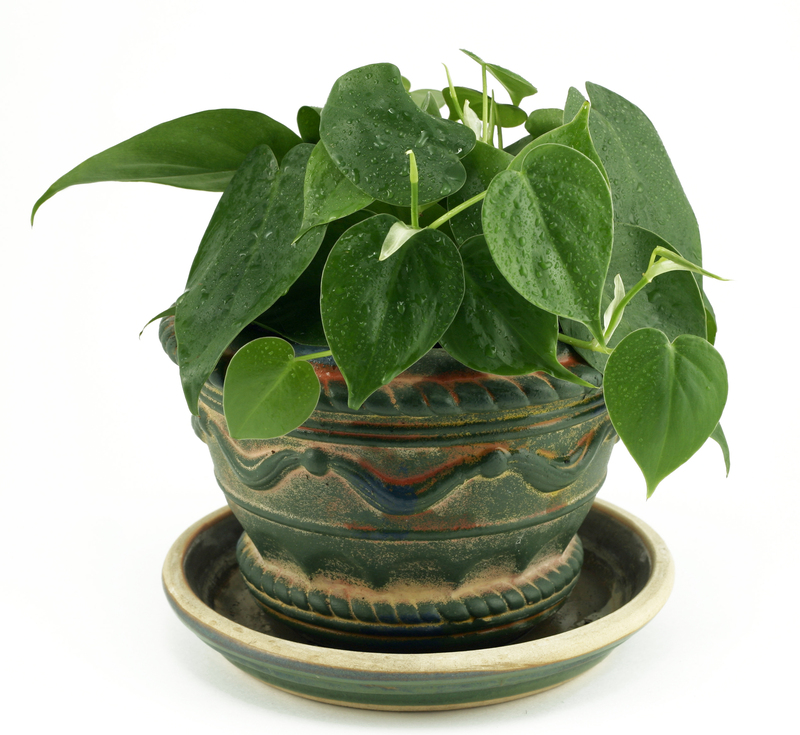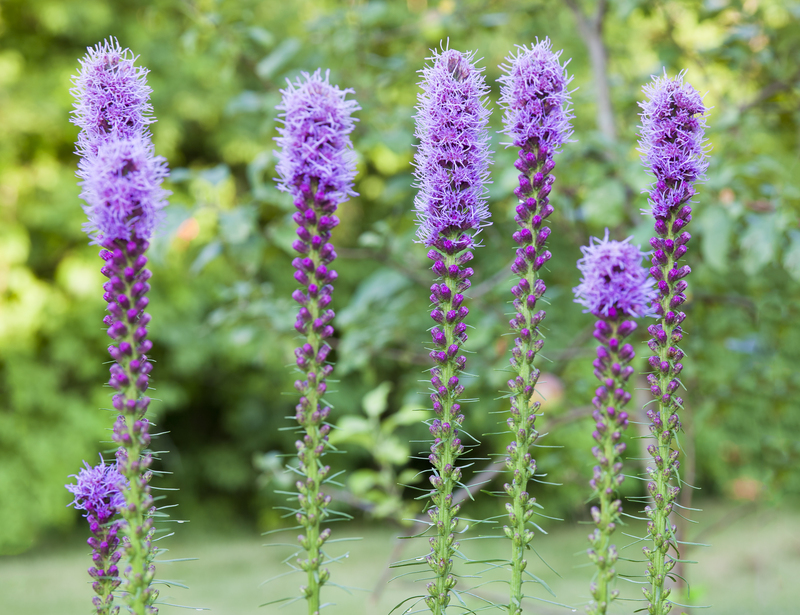Unlock the Secrets to Healthy Orchids
Posted on 17/05/2025
Unlock the Secrets to Healthy Orchids: A Comprehensive Guide
If you are an orchid enthusiast or a curious beginner, the allure of these exotic blooms is undeniable. Growing healthy orchids can seem mysterious, but with the right knowledge, anyone can transform their orchids from delicate houseplants into vibrant, thriving beauties. In this SEO-optimized guide, we'll unlock the secrets to healthy orchids and provide all the tips and tricks you need for long-lasting blossoms and robust plants.

Understanding Orchids: The Basics
What Makes Orchids Unique?
Orchids (family Orchidaceae) comprise one of the largest and most diverse plant families. These remarkable plants are prized for their distinctive, long-lasting flowers and extraordinary variety. What sets orchids apart from many other houseplants are their unusual root and leaf structures, specialized watering needs, and unique growth habits.
- Diverse species: Over 25,000 documented species and more than 100,000 hybrids.
- Epiphytic lifestyle: Most popular orchids, like Phalaenopsis and Cattleya, grow on trees in their native environments.
- Minimal soil requirements: Orchids often thrive in bark or moss instead of traditional soil.
Common Types of Orchids for Indoor Gardening
Some varieties are easier to keep healthy indoors. Beginners often start with:
- Phalaenopsis (Moth Orchid): Graceful, easy to care for, and blooms for months.
- Dendrobium: Hardy, with spear-shaped leaves and plentiful flowers.
- Cattleya: Known for impressive, fragrant blooms.
- Oncidium: Also known as "dancing lady," famous for its profuse sprays of flowers.
Key Secrets to Thriving, Healthy Orchids
1. Mastering Light: The Foundation of Orchid Health
Orchids demand the right balance of light. Most indoor orchids need bright, indirect sunlight. Too little light leads to no blooms; too much causes scorched leaves.
- Ideal Placement: East-facing windows are often best. South or west-facing windows work if filtered with a sheer curtain.
- Leaf color as a light guide: Healthy Phalaenopsis leaves should be bright green, not dark green (too little light) or yellowish (too much light).
- Supplement with artificial lights: Use fluorescent grow lights in winter or rooms with limited daylight.
2. Orchid Watering Wisdom
Orchids are particularly prone to root rot if watered incorrectly. Uncovering the secrets to watering orchids will ensure your plants remain vibrant and healthy.
- Less is often more: Water when the potting medium is nearly dry. Overwatering kills more orchids than underwatering.
- Humidity matters: Orchids flourish in 40-60% humidity. Use a humidity tray, mister, or room humidifier as needed.
- Water quality: Use rainwater, filtered, or distilled water if your tap water is hard or heavily chlorinated.
Tip: Orchid roots love air. Never let orchids sit in water--good drainage is essential!
3. Perfecting Temperature and Airflow
Healthy orchids require consistent temperatures and fresh air.
- Day/night temperature differences: Most orchids prefer daytime temperatures of 65-75?F (18-24?C) and nighttime temps of 55-65?F (13-18?C).
- Air circulation: Orchids flourish with gentle airflow. Use a small fan set on low, directed away from the plant.
- Avoid drafts: Keep orchids away from direct blasts of hot or cold air.
4. Special Orchid Feeding Techniques
Feeding is a critical secret to maintaining healthy orchid plants. Orchids need specific nutrients delivered sparingly.
- Fertilize weakly, weekly: Use a balanced orchid-specific fertilizer at half or quarter strength every 1-2 weeks during the growing season.
- Flush salts regularly: Once a month, water the plant thoroughly to flush out fertilizer salts.
- Adjust feeding in winter: Reduce fertilizing when orchid growth slows in colder months.
5. Repotting Orchids the Right Way
Repotting is vital to maintaining healthy orchid roots. As orchids age, potting material breaks down and suffocates roots.
- Time it well: Repot every 1-2 years, ideally just after flowering finishes.
- Choose the right mix: Use a coarse, airy orchid bark or sphagnum moss medium for best results.
- Inspect and trim roots: Remove mushy, black, or dead roots before repotting.
Common Orchid Problems and Their Solutions
Yellowing Leaves
Yellow leaves are often a sign of either overwatering, excessive sunlight, or natural aging.
- Check watering schedule: Ensure the potting medium is dry before adding more water.
- Move to less intense light: Avoid direct midday sun.
- Natural leaf drop: Lower, older leaves turning yellow and dropping is normal as new growth appears.
Root Rot
Root rot is the greatest enemy to orchid health, causing mushy, brown roots.
- Improve drainage and airflow: Use well-draining orchid bark and ventilate the roots.
- Trim damaged roots: Sterilize scissors and remove affected tissue; repot in fresh mix.
Pest Problems
Mealybugs, scale, spider mites and aphids can seriously set back orchid growth.
- Early detection: Inspect leaves and stems regularly.
- Physical removal: Use a damp cloth or cotton swab dipped in rubbing alcohol to remove pests.
- Maintain humidity and airflow: These conditions discourage many pests.
No Blooms? Here's What to Do
It's frustrating when a healthy orchid fails to bloom. Unlock the secret to consistent orchid blooming by checking these factors:
- Light levels: Gradually increase exposure if foliage is very dark green.
- Temperature drop at night: Some orchids won't bloom unless exposed to slightly cooler nighttime temperatures.
- Fertilizer: Switch to a fertilizer higher in phosphorus when bloom spikes begin to develop.
Advanced Secrets for Orchid Enthusiasts
Propagating Orchids
Skilled growers master propagation to multiply favorite orchids:
- Keiki method: Some orchids sprout baby plants ("keikis") on flower spikes. Remove and pot when roots are at least 2-3 inches long.
- Division: Sympodial orchids like Cattleya can be divided when repotting; ensure each division has at least 3 pseudobulbs.
Orchid Mounting
For an authentic display, some growers mount orchids onto bark or branches, mimicking their wild habitat.
- Use sphagnum moss: Wrap roots to hold moisture; mist frequently for adequate humidity.
- Fasten securely: Tie roots gently with twine or fishing line, avoiding root damage.
Orchid Care Throughout the Year
Spring and Summer
- Boost watering and feeding: Plants are actively growing and flowering.
- Monitor light levels: Shade from intense midday sun to prevent leaf burn.
- Increase humidity: Use trays or mist spray as rising temps may reduce indoor humidity.
Autumn and Winter
- Reduce watering: Many orchids slow growth in cooler months.
- Cut back fertilizer: Feed monthly or as needed only when new growth appears.
- Encourage resting period: Some varieties, like Dendrobium, require a dry rest to bloom fully next season.

Frequently Asked Questions About Keeping Orchids Healthy
- How do I know if my orchid is healthy?
- Signs include firm, green leaves, plump roots, and regular new growth or blooming.
- Should I cut the flower spike after blooming?
- On Phalaenopsis, cut above the node for possible rebloom. For others, remove spent spikes at the base.
- Can orchids grow in regular potting soil?
- No--orchid roots require special air circulation. Use orchid-specific bark, moss, or coconut husk media.
- Why are my orchid's buds turning brown and falling off?
- This "bud blast" may be caused by sudden temperature changes, low humidity, or relocation stress.
- Is misting orchids necessary?
- It helps, but don't overdo it. Mist in the morning; never drench leaves at night.
Conclusion: Unlock Your Orchid's Full Potential
Growing healthy orchid plants isn't an unfathomable mystery. By mastering the basics--correct lighting, watering, feeding, repotting, and environmental needs--you truly unlock the secrets to healthy orchids. With a little patience and the insights shared in this guide, you'll be well on your way to enjoying lush, long-flowering orchids that are the envy of every plant lover.
Ready to put these secrets into action? Your next breathtaking orchid display is just a few tender care steps away!

